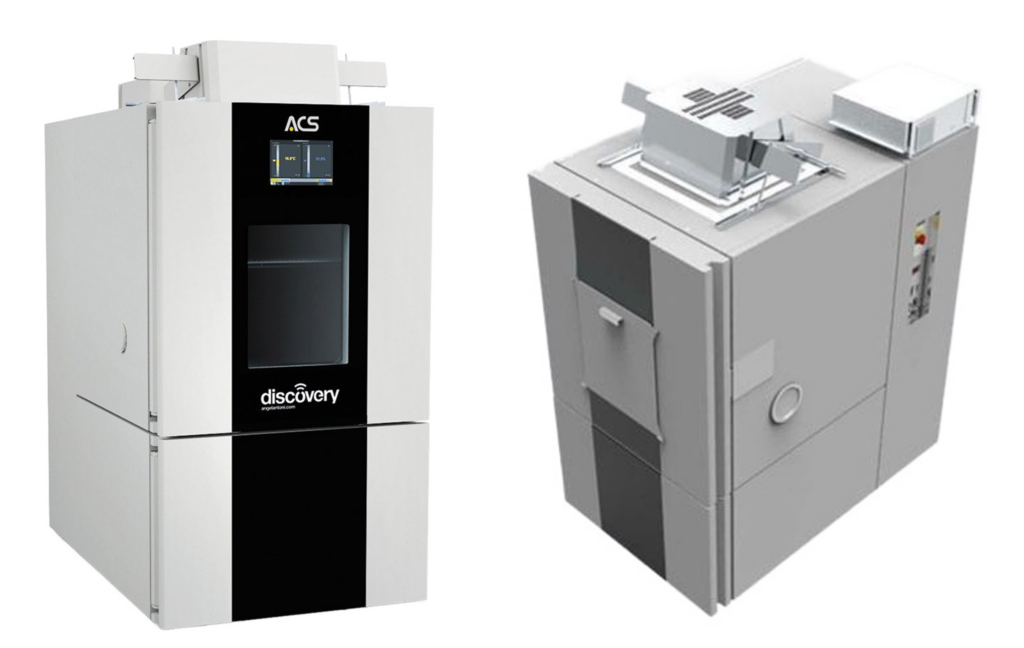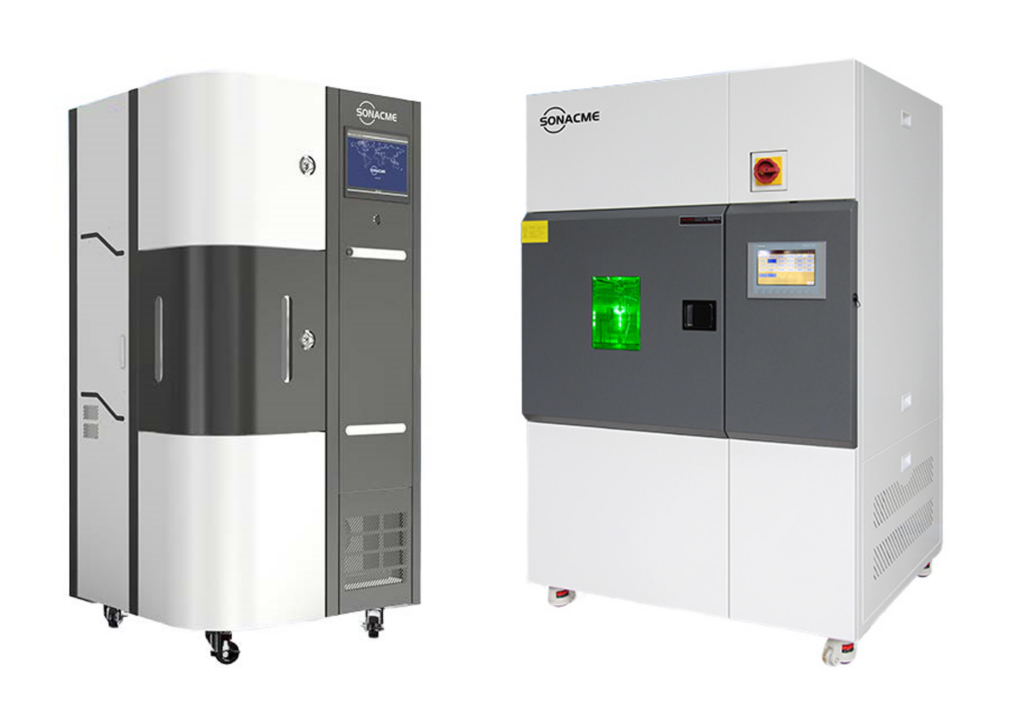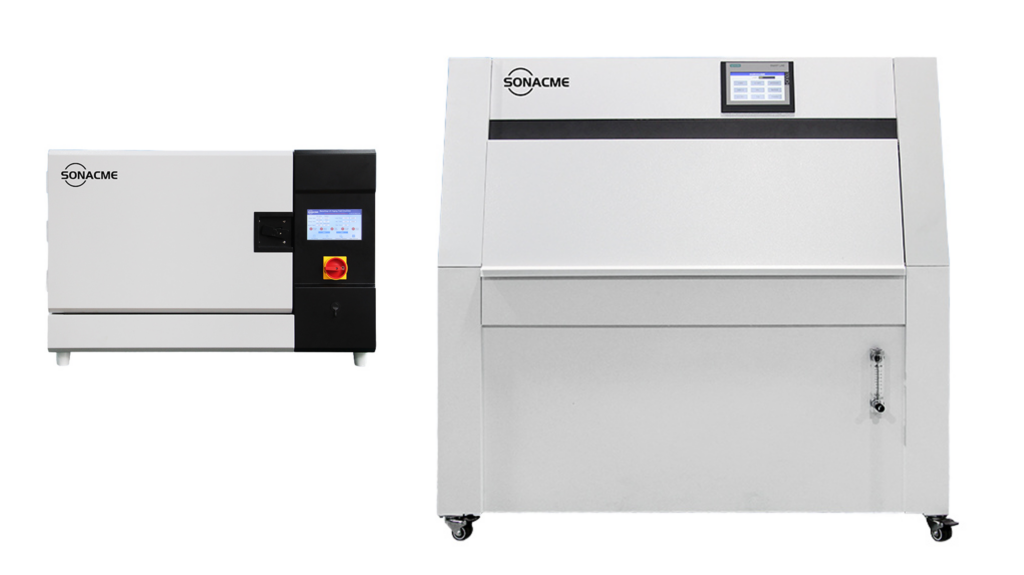
How does solar radiation age your material? Find out with our solar simulation chambers!
Solar simulation chambers allow for the accelerated aging of materials by exposing them to intense levels of solar radiation, heat, and other environmental conditions in a controlled setting.
This process dramatically speeds up the natural aging process, enabling manufacturers to quickly evaluate how products will perform over their intended lifespan.
Using Metal Halide, Xenon or UV lamps bring unique characteristics to the solar simulation chambers, affecting how they simulate environmental conditions and test material durability.
Solar simulation chambers with Metal Halide lamps
Typically, these chambers use MHG lamps that emit a quasi-continuous spectrum when filtered, similar to global solar radiation but not as broad as xenon. The spectrum mainly includes visible and UV light, with reduced infrared output, making them suitable for applications where less heat generation is desirable. Often chosen for their efficiency and ability to cover large areas, they are suitable for photovoltaic testing and other applications where large-scale, high-intensity light is needed.

Solar simulation chambers with Xenon lamps
Xenon lamps provide a full-spectrum sunlight simulation, including ultraviolet, visible, and infrared light. This comprehensive spectrum makes them ideal for tests that require a highly accurate simulation of natural sunlight to assess how materials will perform under direct and varied sun exposures. These are used for more comprehensive testing where all aspects of sunlight exposure (including thermal effects due to IR radiation) are relevant, such as in automotive and textile industries.

Solar simulation chambers with UV lamps
These specifically focus on emitting ultraviolet light, using fluorescent UV lamps that can mimic the damaging UV component of sunlight. These chambers primarily test the material’s resistance to UV degradation, which includes fading, cracking, and other forms of deterioration. Best for applications where UV exposure is the primary concern, such as testing coatings, plastics, and fabrics for UV stability and longevity.

Summary:
The choice between solar simulation chambers with Metal Halide, Xenon or UV lamps depends on the specific testing requirements, the precision needed in simulating sunlight, and considerations of operational efficiency and maintenance costs.
Each type offers distinct advantages for different industrial applications, from simple UV resistance testing to comprehensive environmental simulation.